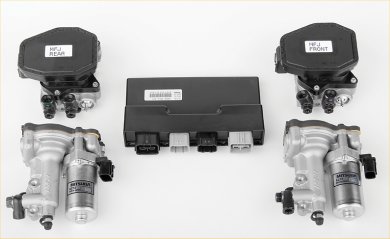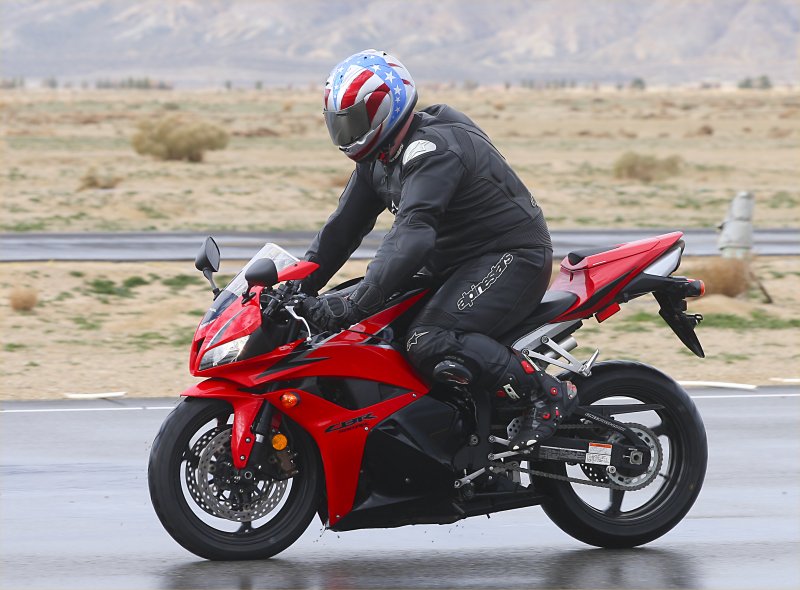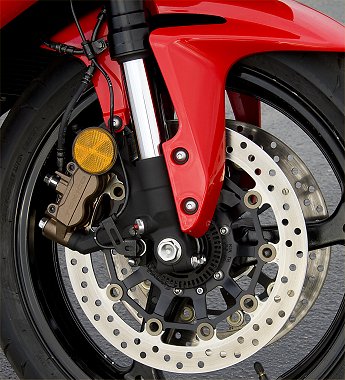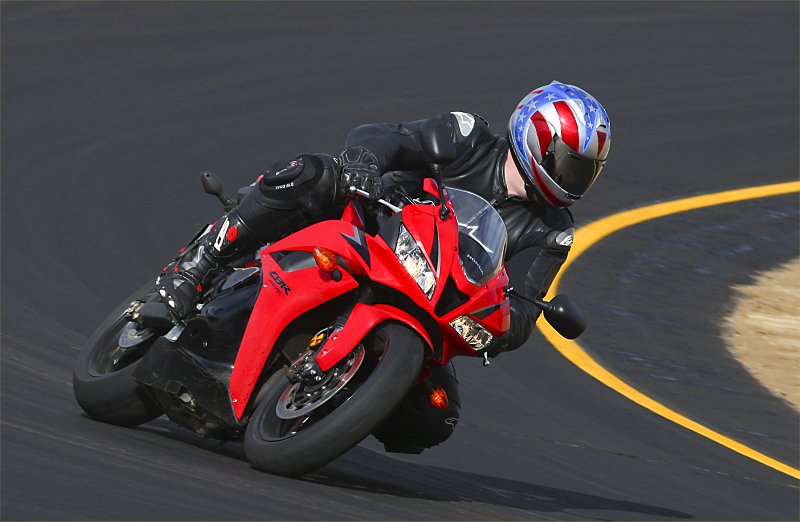

On higher priced versions of the 2009 CBR600RR and CBR1000RR, Honda is introducing “Combined ABS” (C-ABS), which, according to Honda offers four main features, including:
- Immediate measurement of rider braking input allows for distribution of braking force that minimizes chassis reaction, maintaining better braking control when slowing and stopping.
- Electronic control of braking application provides distribution of braking force to both wheels.
- Electronically controlled ABS ensures appropriate triggering of the ABS action when needed, together with smooth ABS intervention.
- Small, relatively lightweight component size means that Combined ABS is well integrated in the motorcycle design, enhancing mass centralization for excellent overall handling.

It is important to remember that high-tech rider aid devices, like C-ABS and traction control, will not prevent a rider from crashing in all circumstances. We were reminded of this when a talented journalist went down on a wet, slick road course during Honda’s introduction of this system to the press.
From a rider’s prespective, C-ABS is supposed to be invisible. No pulsing at the lever, and otherwise normal feedback from both the hand brake and the foot brake. What the rider should notice is enhanced traction and handling when applying the brake in compromised traction environments.
I guess the easiest way to tell how well something works, is to not notice it working. My recent opportunity to ride Honda’s new for 2009 CBR600RR with C-ABS was going to test that theory. Making the drive from San Diego to the Honda Proving Center of California, which is located just north of the middle of nowhere in the High Desert, left me with plenty of time to imagine what the bike was going to be like to ride. With the weather forecast calling for heavy rain, it wasn’t my idea of ideal riding conditions.


Arriving at the test venue, to my surprise it looked like the weather would be fine. We were given a technical briefing describing, in great detail, how the C-ABS system works, then at last, it was time to head out onto the HPCC “Winding Road Test Course” for a session aboard the bike. I don’t think we got to the first turn on the course before the skies opened up and began to pour down rain.
After a couple of sighting laps, and plenty of standing water on the course, I began experimenting with the brakes. At normal brake pressure I didn’t notice anything out of the ordinary about the brakes, but at a much more exaggerated input level on the front brake lever, I noticed the rear of the bike wasn’t moving around and the bike felt very settled, unlike a motorcycle equipped with conventional brakes.
As the rain stopped and the course began to dry out, I was able to increase the pace and comfortably go into a corner a lot harder on the brakes. It seemed as though the harder you pushed your braking, the better the bike felt. The sensation of the rear wheel lifting off the ground is all but eliminated by the system.

We were then given an opportunity to test the brakes on a skid pad. Extremely hard stops from speeds of 70 mph were unbelievably easy, just tug on the front brake lever and press on the rear brake pedal as hard as you can and let the C-ABS do all of the work for you. After several passes on the skid pad, I was impressed by the lack of the pulsating feel normally associated with ABS brakes. In the end, as a result of my testing, I think Honda’s C-ABS is another step forward for both ABS and linked braking. The system is effectively invisible, even to an experienced rider, and extremely effective.





